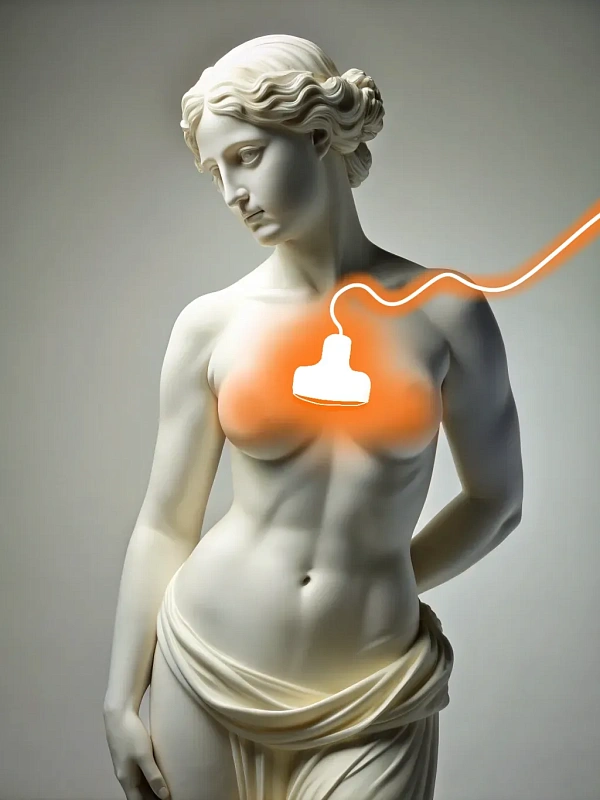Ultrasound of the mammary glands
A diagnostic method that allows you to evaluate the structure of breast tissue and identify pathological changes. Suitable for women of all ages and health conditions.

Ultrasound of the mammary glands allows you to examine in detail the tissue structure of the breast, revealing inflammation, cysts and tumors.
Special preparation for breast ultrasound is not required. It is optimal to undergo a study in the first days after the end of menstruation (5-9 days of the cycle), when the mammary glands are less susceptible to edema.
The procedure is usually performed in a sitting or lying position. The patient places her arm on the examined side behind her head to provide better access to the mammary gland. Gel is applied to the skin. The doctor runs the sensor over the entire surface of the breast, examining the glandular tissue, ducts and adjacent lymph nodes from different angles and in different projections. Images of tissues and vessels are recorded and stored digitally for further analysis.
A high-frequency ultrasound machine is used for ultrasound. Modern sensors have high resolution and allow you to get a detailed image of small structures.
After completion of breast ultrasound, the patient can immediately return to daily life. The results of the study are available immediately after the procedure and are transmitted to the attending physician for analysis.
Benefits
Safety
Ultrasound has no radiation effect and can be performed repeatedly.
High accuracy of soft tissue diagnostics
Ultrasound is especially effective for women with dense glandular tissue.
Absence of pain
The procedure does not cause discomfort and does not require special training.
A wide range of diagnosed conditions
The technique helps to diagnose a wide range of diseases.
Frequently Asked Questions
When is it better to have an ultrasound of the mammary glands?
Do I need to do an ultrasound if there are no complaints?
Is ultrasound different from mammography?
Didn't find an answer to your question?
You can describe your problem in detail and ask a question to the doctor. He will answer you and help you find a solution
Врачи
Смотреть всех врачейUltrasound diagnostician, Candidate of Medical Sciences, Higher Qualifying Category Physician. Head of the Functional and Ultrasound Diagnostics department.
Ultrasound Diagnostics Doctor
Similar referral activities
Ultrasound of the joints
A diagnostic method that allows you to assess the condition of soft tissues, tendons, ligaments and cartilage structures of the joint. It is used to detect inflammatory, traumatic and degenerative changes in joints.
Ultrasound of the abdominal cavity
Ultrasound allows you to visualize internal organs such as the liver, gallbladder, pancreas, spleen, kidneys and other structures.
Ultrasound of the gallbladder
A study that allows you to assess the condition and functionality of the gallbladder, as well as identify pathologies such as stones, inflammatory processes and neoplasms.
Ultrasound of the musculoskeletal system
Ultrasound examination, which provides high-precision visualization of muscles, tendons, joints and bone surfaces, allows you to quickly identify injuries and diseases.
Ultrasound of soft tissues
A study that allows you to assess the condition of the skin, subcutaneous fat, muscles, tendons, lymph nodes and blood vessels. It helps to identify inflammatory processes, hematomas, tumor formations and traumatic injuries.
Ultrasound of the pelvic organs
Ultrasound allows you to visualize and assess the condition of the internal organs of the pelvis in women and men. In women, the study includes examination of the uterus, ovaries and fallopian tubes, in men — the prostate gland and seminal vesicles.

